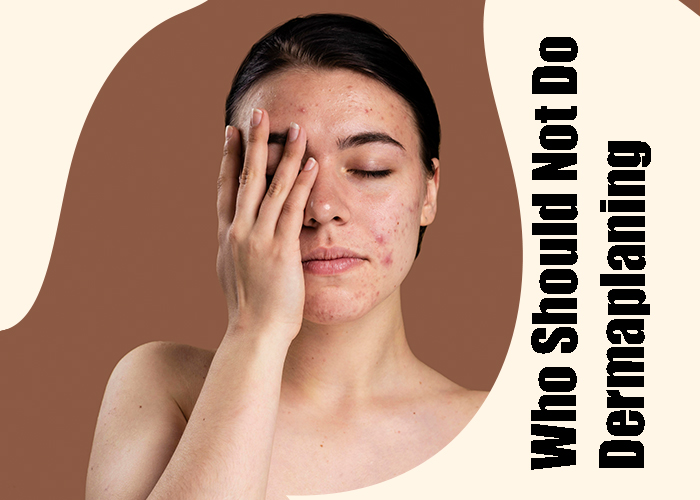Who doesn’t want a smooth glowing skin? Surely, one of the most popular methods is dermaplaning. Dermaplaning can be a fantastic way to achieve smoother, more radiant skin. But what about the after-dermaplaning effects?Let’s talk about how to avoid breakouts after dermaplaning.
The horrifying stories about “dermaplaning went wrong” are not made up either. So, how to avoid breakouts after dermaplaning? Worry not! In this article, we will explore effective tips to help you avoid breakouts after dermaplaning and maintain a clear, healthy complexion.
What is Dermaplaning
Dermaplaning is a non-invasive exfoliation procedure that removes dead skin cells and fine vellus hair (peach fuzz) from the skin’s top layer using a special blade, often known as a sterile surgical scalpel.
According to Maja Swierczynska, dermaplaning trainer at Harley Academy,
“There is a big misconception about dermaplaning, as people think it’s a hair removal treatment, but actually it is a superficial exfoliation treatment, and a removal of vellus hair is a positive side effect of this treatment.”
The benefits of dermaplaning include immediate improvement in skin texture and tone, a smoother complexion, and enhanced product absorption. The removal of the top layer of dead skin cells can also diminish the appearance of fine lines and allow for better makeup application.
However, it’s important to note that dermaplaning may not be suitable for everyone. Potential drawbacks include the risk of post-treatment redness, irritation, or temporary sensitivity. Additionally, individuals with active acne or certain skin conditions may need to avoid dermaplaning, as it could exacerbate their conditions.
It’s crucial to undergo dermaplaning with a qualified professional to minimize potential risks and maximize the benefits for optimal skin health.
Who Should Not Do Dermaplaning
While this treatment offers numerous benefits for many individuals, it may not be suitable for everyone. If you are interested in dermaplaning and not sure about your skin type, it is best to consult a licensed aesthetician or dermatologist before booking your appointment. They can assess your skin type and condition and determine if dermaplaning is right for you.
Skin Inflammation or Active Acne:
Dermaplaning involves scraping the skin’s surface with a scalpel, which may exacerbate active acne or skin inflammation. Individuals with conditions like cystic acne should avoid dermaplaning in areas with active breakouts to prevent further irritation and potential infection.
Sensitive or Rosacea-Prone Skin:
Those with highly sensitive skin or a tendency toward rosacea should approach dermaplaning with caution. The procedure may lead to increased redness and sensitivity, potentially triggering flare-ups in individuals with pre-existing skin conditions.
History of Herpes Simplex (Cold Sores):
Dermaplaning can potentially trigger the reactivation of the herpes simplex virus in individuals with a history of cold sores. It’s essential for those with a susceptibility to cold sores to inform their skincare professional beforehand and take appropriate precautions.
Recent Sunburn or Tanned Skin:
Individuals with recent sunburn or tanned skin should avoid dermaplaning until their skin has fully healed. Dermaplaning on sunburned or freshly tanned skin can cause increased irritation, and redness, and potentially lead to complications.
Use of Certain Medications:
Some medications can increase skin sensitivity and compromise the healing process after dermaplaning. Patients using retinoids, Accutane, or other medications that affect skin thickness and sensitivity should consult with their healthcare provider before undergoing dermaplaning.
Bleeding Disorders:
People with blood disorders, such as hemophilia or scleroderma, as dermaplaning can cause bleeding or damage the skin.
Pregnancy:
While there is limited research on dermaplaning during pregnancy, some professionals recommend avoiding the procedure as a precaution. Hormonal changes during pregnancy can affect skin sensitivity, making it essential to consult with a healthcare provider before considering dermaplaning.
How to Avoid Breakouts After Dermaplaning
Dermaplaning can result in smoother, brighter, and more even skin tone. However, some people may experience breakouts after dermaplaning, especially if they have sensitive or acne-prone skin. So, it is a must to consult with an aesthetics or dermatologist before trying it out. If you are good to go still there are some issues involved. Here are some things you need to do and can’t do.
Cleanse Thoroughly
Begin with a gentle cleanser to remove any makeup, oil, or impurities from your skin before the dermaplaning procedure. Clean skin provides a smooth surface for the scalpel, reducing the likelihood of irritation. Then, cleanse your face gently after the treatment. Avoid using harsh or abrasive cleansers that can irritate the skin.
Hydrate from the Inside Out:
Stay hydrated by drinking plenty of water. Proper hydration supports overall skin health and aids in the recovery process after dermaplaning. Hydration is essential for healthy skin, as it helps flush out toxins and maintain the skin’s elasticity and plumpness. Drink at least eight glasses of water a day
Also, hydrate your skin with a serum or face oil. Dermaplaning can make your skin dry and sensitive, so it’s important to moisturize and nourish it with a hydrating serum or face oil. Look for products that contain hyaluronic acid, vitamin C, or ceramides, which can help restore the skin barrier and prevent moisture loss.
Avoid Active Ingredients Pre-Dermaplaning and Post-Dermaplaning:
Refrain from using products containing active ingredients like retinoids, alpha hydroxy acids (AHAs), glycolic acid, benzoyl peroxide, beta hydroxy acids (BHAs), salicylic acid, and other exfoliants or acne treatments. for at least a week before dermaplaning.
Simplify your skincare routine for two weeks. After dermaplaning, your skin will be more vulnerable to irritation and inflammation, so it’s best to avoid using any products that can cause adverse reactions. This includes Stick to a basic routine of cleansing, moisturizing, and sunscreen for two weeks after the treatment.
Sunscreen is Must:
Use sunscreen every day. Dermaplaning can make your skin more sensitive to the sun’s rays, which can cause sunburn, hyperpigmentation, and premature aging. To protect your skin, use broad-spectrum sunscreen with at least SPF 30 every day, even if you’re indoors or it’s cloudy. Reapply every two hours if you’re outdoors or sweating.
No Touching Skin:
Avoid touching your face or picking at your skin. Touching your face can introduce bacteria and dirt to the skin. It can clog your pores and cause breakouts. Picking at your skin can also cause scarring and infection. Resist the urge to touch or pick at your skin, and keep your hands clean and sanitized.
Pregnancy:
While there is limited research on dermaplaning during pregnancy, some professionals recommend avoiding the procedure as a precaution. Hormonal changes during pregnancy can affect skin sensitivity, making it essential to consult with a healthcare provider before considering dermaplaning.
Skip Swimming:
It is better to avoid swimming pools for 24 hours. Cause, chlorinated water can dry out and irritate your skin, worsening your breakouts. If you want to swim, wait at least 24 hours after dermaplaning, and rinse your face with fresh water afterward.
Sum Up
Dermaplaning can remove dead skin cells and peach fuzz, resulting in smoother and more radiant skin. However, it is not suitable for everyone and can have adverse effects such as over-exfoliation, bacterial spread, and potential physical damage. By following the techniques mentioned above, you can enjoy the benefits of dermaplaning without worrying about breakouts.
FAQ
Can I do dermaplaning at home?
While there are dermaplaning tools available for home use, it’s strongly recommended to have dermaplaning performed by a licensed skincare professional to minimize the risk of complications and ensure proper technique and hygiene.
Does dermaplaning make your skin purge?
Absolutely not! Dermaplaning is an exfoliation method and skin purging typically occurs when certain skincare products or treatments increase cell turnover. So, there is no chance of skin purge after dermaplaning.




